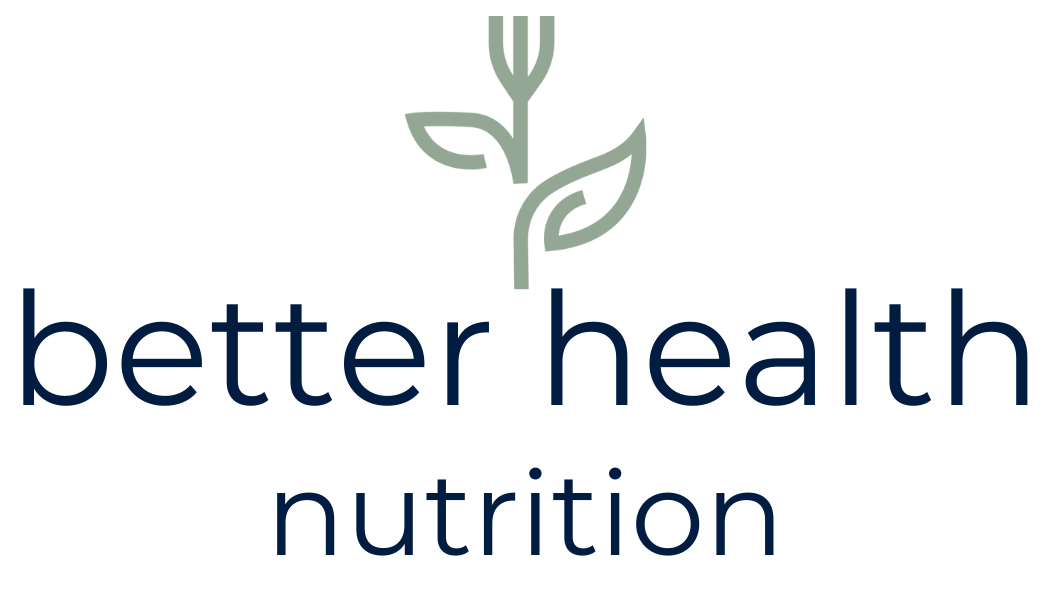What is Intuitive Eating and How Can it Help Me?
The Intuitive Eating framework was developed in 1995 by two dietitians, Evelyn Tribole and Elyse Resch. It consists of 10 principles with a focus on weight-neutrality and an inward focus on the mind-body relationship in eating. This framework is a personal process that focuses on internal cues (energy, hunger cues, fullness cues, how we feel) rather than external cues (calories, points, weight), which dieting has taught us to follow. The 10 principles are as follows:
1. Reject the Diet Mentality. This principle helps us understand what the diet mentality is and how to identify it. Through the process, you learn how the mentality has disrupted your ability to nourish yourself properly and to have a healthy relationship with food.
2. Honor Your Hunger. Honoring your hunger is a process that is often damaged by dieting. Through the process, you learn how to identify true, biological hunger that is not focused on rules and to use that hunger to feed your body properly.
3. Make Peace with Food. Dieting defines “healthy foods” as “good” and “unhealthy foods” as “bad”. The diet mentality attaches morality to eating. Through this process, you learn how guilt and deprivation have influenced your eating choices and behaviors. This process helps you learn how to give yourself permission to eat any food at any time and to accept all foods without feeling the need to compensate.
4. Challenge the Food Police. The food police also relate to the thoughts of morality – “good” vs “bad”. You will learn to recognize the rules by which you’ve been eating and to remove the guilt associated with eating certain foods.
5. Discover the Satisfaction Factor. This process allows us to feel enjoyment and satisfaction from eating. Mindful eating and taking the time to notice what the food tastes like and how satisfying it is not only improves the enjoyment of the meal, but also improves our digestion and mood.
6. Feel Your Fullness. On the opposite side of the spectrum from hunger is fullness. Through this process, you learn to listen to your body to feel when it is full and to feel the difference between true, biological fullness, and fullness that you think you should feel once you eat a certain amount. You also learn what comfortable fullness feels like, rather than that uncomfortable “stuffed” feeling.
7. Honor Your Feelings without Using Food. Food does have an emotional component and acknowledging and accepting that is important! Through this process, you learn to be emotionally aware and understand how food helps you cope with those emotions. You also learn other productive alternatives to cope with emotions and feelings.
8. Respect Your Body. This process is aligned with the Health at Every Size framework. Through this process, you learn to reject the idea of an “ideal body”, to stop body shaming and comparing yourself to others, and to learn that body size and shape is not a reflection of overall health.
9. Exercise – Feel the Difference. Exercise should feel good! So often, exercise is thought of as a punishment or a compensatory way to make up for what we just ate. Through this process, you learn to focus on how it feels to move (internal cue) rather than focusing on numbers (calories burned, weight lost, steps taken).
10. Honor Your Health with Gentle Nutrition. This final step starts making its way to learning about nutrition, while honoring personal preferences. All previous steps should be mastered before focusing on what to eat in order to develop a solid foundation and relationship with food and exercise.
A note about Intuitive Eating: this process is not intuitive to us – and that’s okay! If you ever find yourself in the presence of a baby, you’ll notice how they cry and reach for food when they’re hungry and push away when they’re full. We are born with this intuitive sense for eating; however, the diet mentality pulls us more and more away from knowing our body and more toward following rules and instructions. Regaining this ability is not easy and takes time! For some, you may not even know what true hunger or true fullness feels like. Going through this process is challenging to do on your own (but of course can be done!). However, working with a dietitian, especially one who has gone through this journey for herself, can make the process seem much less scary and much more attainable. Everyone should have the ability to eat, exercise, and be in their body with comfort, ease and enjoyment!
Best,
Erika


